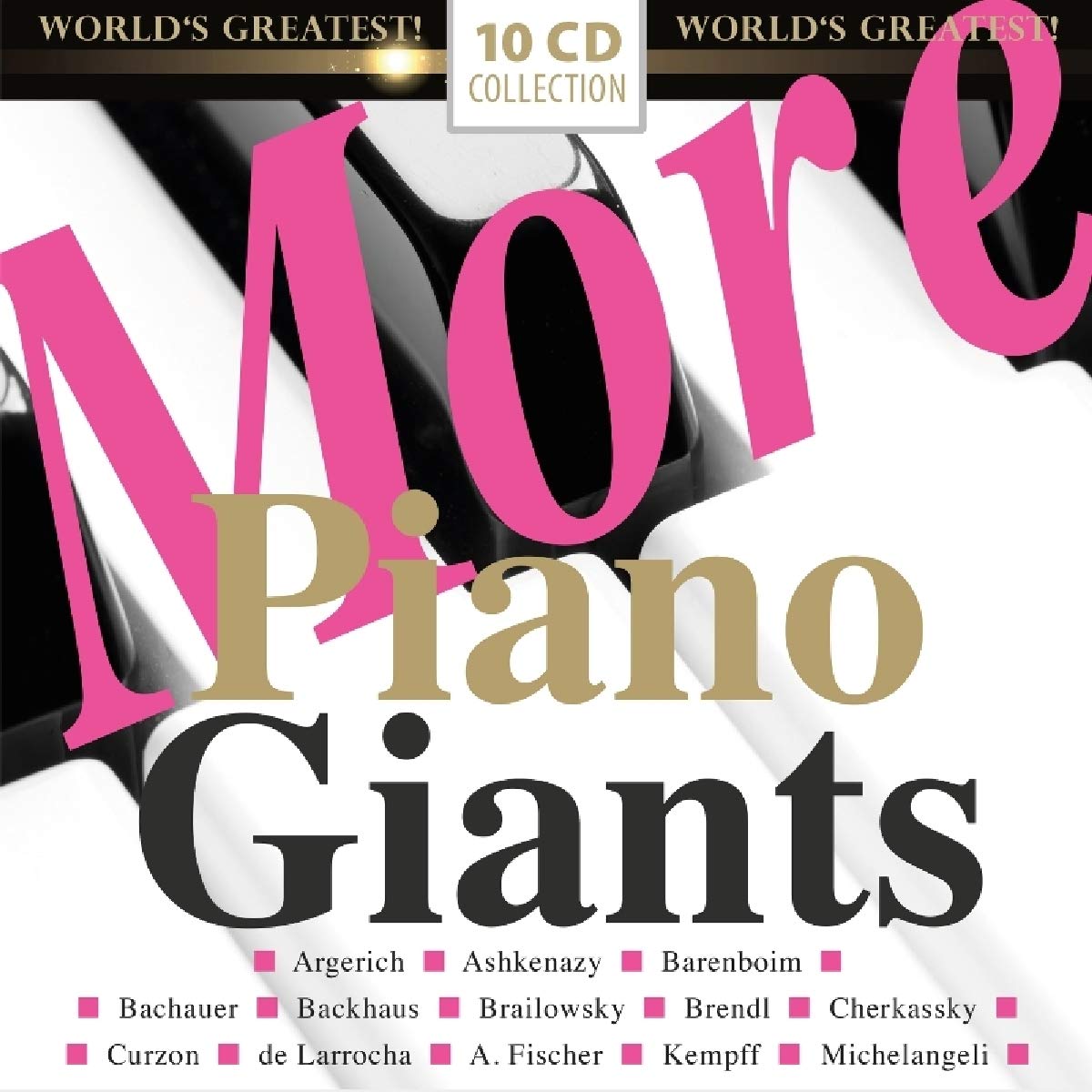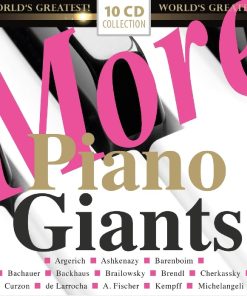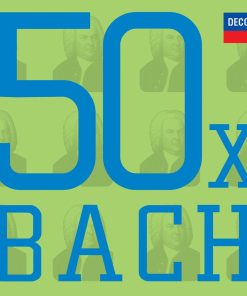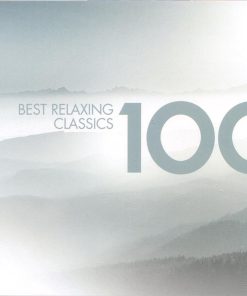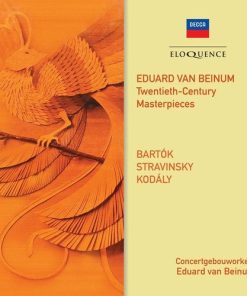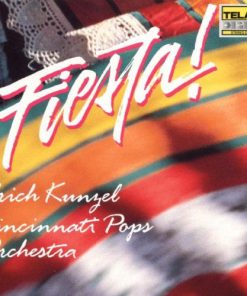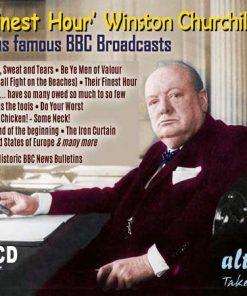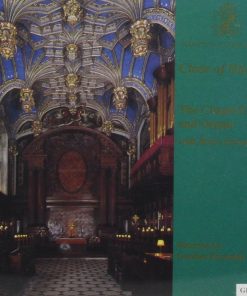MORE PIANO GIANTS – ARGERICH, ARRAU, BARENBOIM and MORE (10 CDS) DOCUMENT
$ 9,99 $ 5,99

A host of highly talented young pianists crowded into the concert halls during the second half of the 20th century, many of whom still strongly influence the cultural life of our times. Representative of these are Martha Argerich, Vladimir Ashkenazy and Daniel Barenboim, who are presented in this collection with characteristic recordings of their first successes. In addition, there are those timeless artists whose recordings have set the standards by which subsequent performers are measured, such as Wilhelm Kempff, Alfred Brendl, Arturo Benedetti Michelangeli and Wilhelm Backhaus, but also “exotics” like Alicia de Larrocha, Shura Cherkassky and the Chopin-marathon-artist Alexander Brailowsky. All of them and a few more are part of this varied and challenging collection.

CD 1
■ MARTHA ARGERICH
Maurice Ravel (1875 – 1937)
PIANO CONCERTO IN G MAJOR
Konzert für Klavier und Orchester, G-Dur
1. I. Allegramente 7‘55
2. II. Allegro assai 8‘17
3. III. Presto 3‘59
MARTHA ARGERICH piano
Südwestfunk-Sinfonieorchester Baden-Baden
conductor / Dirigent Ernest Bour
recorded / aufgenommen 1960
4. JEUX D’EAU 5‘30
Johannes Brahms (1833 – 1897)
RHAPSODIES / Rhapsodien OP. 79
5. Agitato in B minor/ h-Moll 8‘29
6. Molto passionato, ma non troppo allegro 6’31
in G minor / g-Moll
Franz Liszt (1811 – 1886)
7. HUNGARIAN RHAPSODY / 6‘22
Ungarische Rhapsodien No. 6
Tempo giusto – Presto – Andante –
Allegro – Presto
MARTHA ARGERICH piano
recorded / aufgenommen 1961 (4-7)
Total Time 47‘19
Martha Argerich (b. 1941) showed her love for the piano already as a three-year-old in student performances, which later was the basis for an unprecedented career and made her the most famous female pianist in the world. She appeared in front of a concert audience for the first time in her hometown Buenos Aires at eight years of age with concerts by Mozart and Beethoven. In 1955 she became a student of Friedrich Gulda’s in Vienna and won first prizes at competitions in Bolzano and Geneva. Early on, European radio stations and soon also the record industry placed her in front of their microphones. Martha Argerich used her reputation to create a forum for young musicians at her own festivals and also to play music with world stars of completely different styles to demonstrate the versatility of her art. It is therefore only too understandable that she prefers to call herself a piano player instead of a pianist.
CD 2
■ VLADIMIR ASHKENAZY
Frédéric Chopin (1810 – 1849)
PIANO SONATA NO. 3 IN B MINOR, OP. 58
Klaviersonate Nr. 3, h-Moll, op. 58
1. I. Allegro maestoso 9’07
2. II. Scherzo (molto vivace) 2‘41
3. III. Largo 9‘20
4. IV. Finale (Presto non tanto) 4‘55
VLADIMIR ASHKENAZY piano
recorded / aufgenommen 1961
Vladimir Ashkenazy, born in 1937 in Gorky, Russia, was educated at the Moscow Conservatory by longtime Oistrakh partner Lew Oborin. A second prize at the Warsaw Chopin Competition in 1955, followed by the 1st Prize at the Brussels Concours Reine Elisabeth a year later were the start of a sensational career and also gave rise to a major tour of the US and Canada. The first prize in the Tchaikovsky Competition in 1962 further solidified his reputation. Chopin’s works in the version of the young pianist particularly deserve the attention of today’s listeners. Ashkenazy’s musical talent has also been established in numerous recordings, recitals and concert appearances in which he conducted world-famous orchestras.
■ DANIEL BARENBOIM
Ludwig van Beethoven (1770 – 1827)
PIANO SONATA NO. 32 IN C MINOR, OP. 111
Klaviersonate Nr. 32, c-Moll, op. 111
5. I. Maestoso. Allegro con brio 9‘27
ed appassionato
6. II. Arietta 14‘59
(Adagio molto semplice e cantabile)
DANIEL BARENBOIM piano
recorded / aufgenommen 1959
Total Time 50‘36
Daniel Barenboim (*1942, Buenos Aires) was seventeen years old when he first recorded the Beethoven Sonata No. 32, Op. 111. Having given his first concert at the age of seven, three years later he could already be heard with piano recitals in Vienna and Salzburg. He was a young pianist who made people sit up and listen. But he became so much more, also building an international career as a conductor, as a politically ambitious artist founding an orchestra that brings together musicians of different faiths, and giving important impulses as music director of the Berlin State Opera Unter den Linden and its orchestra, the Staatskapelle, to the cultural life of the resurrected German capital. In 1990 he undertook the first tour of Israel with the Berlin Philharmonic.
CD 3
■ WILHELM BACKHAUS
Ludwig van Beethoven (1770 – 1827)
PIANO CONCERTO NO. 5 IN E FLAT MAJOR, OP. 73 (“EMPEROR”)
Konzert für Klavier und Orchester Nr. 5, Es-Dur, op. 73
1. I. Allegro 20‘10
2. II. Adagio un poco moto – attacca: 7‘43
3. III. Rondo: Allegro 10‘28
WILHELM BACKHAUS piano
Kölner Rundfunk-Sinfonieorchester
conductor / Dirigent Georg Solti
recorded / aufgenommen 1956, Live
PIANO SONATA NO. 21 IN C MAJOR, OP. 53 (“WALDSTEIN”)
Klaviersonate Nr. 21, C-Dur, op. 53
4. I. Allegro con brio 8‘48
5. II. Introduzione. Adagio molto – attacca: 3‘10
6. III. Rondo: Allegretto moderato – Prestissimo 10‘27
WILHELM BACKHAUS piano
recorded / aufgenommen 1959, Live
Total Time 60‘54
Wilhelm Backhaus (1884 – 1969) was recognized and celebrated around the world as an outstanding authority for classical-romantic piano music. His Beethoven recordings are still regarded as benchmarks. He was internationally known early on: At the age of 16 he gave his first concert in London, in 1905 he won the coveted Anton Rubinstein Prize in Paris – against Bartok and Klemperer –, and his US debut in 1912 was followed by tours through South America and Australia. Even in old age he endured the rigors of concert life and set standards with his interpretations, which were always straightforward and free of virtuosic vanity.
CD 4
■ ALFRED BRENDEL
Ludwig van Beethoven (1770 – 1827)
PIANO SONATA NO. 1 IN F MINOR, OP. 2 NO. 1
Klaviersonate Nr. 1, f-Moll, op. 2 Nr. 1
1. I. Allegro 4‘06
2. II. Adagio 4‘13
3. III. Menuetto: Allegretto. Trio 3‘29
4. IV. Prestissimo 5‘17
PIANO SONATA NO. 17 IN D MINOR, OP. 31 NO. 2 (“TEMPEST”)
Klaviersonate Nr. 17, d-Moll, op. 31 Nr. 2 („Der Sturm“)
5. I. Largo – Allegro – Adagio 7‘48
6. II. Adagio 7‘46
7. III. Allegretto 5‘50
PIANO SONATA NO. 23 IN F MINOR, OP. 57 („APPASSIONATA“)
Klaviersonate Nr. 23, f-Moll, op. 57
8. I. Allegro assai 9‘42
9. II. Andante con moto 6‘15
10. III. Allegro ma non troppo 8‘05
ALFRED BRENDL piano
recorded / aufgenommen 1961/62
Total Time 62‘47
Alfred Brendel (* 1931), one of the most important European pianists of the 20th century, had initially not decided on a career in music; he did not start out as a “prodigy”. Painting, literature and philosophy found his interest early on and shaped his image as an artist of wide-ranging intellectuality in the coming years of his international career. The universities of Oxford, London and Cologne awarded him honorary doctorates, many of his records were awarded prizes, and his theoretical writings received a lot of attention. During the early years of his career he had already immersed himself in Beethoven’s piano works and recorded many of the rarely heard variations and all sonatas in full.
CD 5
■ SHURA CHERKASSKY
Franz Schubert (1797 – 1828)
PIANO SONATA IN A MAJOR, D. 959
1. I. Allegro 11‘04
2. II.Andantino 6‘49
3. III. Scherzo –Allegro vivace – Trio 4‘35
4. IV. Rondo: Allegretto 11‘24
Modest Mussorgsky (1839 – 1881)
PICTURES AT AN EXHIBITION
Bilder einer Ausstellung
5. Promenade
1. Gnomus 3‘22
6. Promenade
2. Il vecchio castello 4‘33
7. Promenade
3. Tuileries 1‘16
(Dispute d’enfants après jeux)
8. 4. Bydlo 3‘04
Promenade
9. 5. Ballett der unausgeschlüpften Küken 1‘04
10. 6. „Samuel“ Goldenberg und 3‘28
„Schmuyle“
11. Promenade
7. Limoges. Le marché 1‘20
(La grande nouvelle)
12. Catacombae (Sepulcrum romanum) 3‘51
Con mortuis in lingua mortua
13. Die Hütte auf Hühnerfüßen (Baba-Jaga) 2‘43
14. Das Heldentor 5‘06
(in der alten Hauptstadt Kiew)
SHURA CHERKASSKY piano
recorded / aufgenommen 1960 (1-4)
1961 (5-14) Live, Salzburg
Total Time 63‘47
Shura Cherkassky (1909, or 1911, – 1995) began his career as a “prodigy”, even extending its arc as he initially gave the wrong year of birth. His pianistic abilities however went far beyond novelty status, helping him to achieve lasting success in the concert halls of the world for a quarter of a century. He became a beloved virtuoso, whose playful lightness and versatility inspired, for instance in the “Pictures of an Exhibition”. Cherkassky received his first lessons from his mother, who had completed her piano studies at the St. Petersburg Conservatory. In the confusion of the October Revolution the family fled to the USA, where the first concert with the eleven-year-old was held in Baltimore. In 1923 he already performed at the White House, and in 1928 he started his first major tour of Australia and New Zealand. In the following decades, he became a world-traveling pianist and even returned to the Soviet Union on three occasions for concerts between 1976 and 1987.
CD 6
■ CLIFFORD CURZON
Robert Schumann (1810 – 1856)
FANTASIE IN C MAJOR, OP. 17
FANTASIESTÜCKE, C-DUR, OP. 17
1. I. Durchaus fantastisch und leidenschaftlich vorzutragen 12‘33
– Im Legenden-Ton
2. II. Mäßig. Durchaus energisch – Etwas langsamer – Viel bewegter 7‘57
3. III. Langsam, getragen. Durchweg leise zu halten – Etwas bewegter 10‘10
Franz Schubert (1797 – 1828)
FOUR IMPROMPTUS, D. 935
VIER IMPROMPTUS
4. I. Allegro moderato, F minor / f-Moll 9‘19
5. II. Allegretto, A flat major / As-Dur 6‘32
6. III. Theme and Variations, B flat major / B-Dur 11‘02
7. IV. Allegro scherzando, F minor / f-Moll 6‘49
CLIFFORD CURZON piano
recorded / aufgenommen 1954 (1-3) 1952 (4-7)
Total Time 64‘31
Clifford Curzon (1907 – 1982), knighted by the Queen as “Sir Clifford” and unanimously celebrated by the critics of his time, is unquestionably one of the most important English pianists of the 20th century. His recordings of the works of Schubert, Mozart, Beethoven and Schumann have become points of reference by which interpreters are still measured even today. Curzon performed together with Benjamin Britten and proved to be a sensitive chamber musician alongside members of the Amadeus Quartet and the Vienna Octet of Willi Boskowsky. What is obvious above all in his recordings, however, is what critics around the world attested Curzon’s playing: a piano tone that “was able to unite a clear contour and bright luminosity in an inimitable way”.
CD 7
■ ALICIA DE LARROCHA
Enrique Granados (1867 – 1916)
ESCENAS ROMÁNTICAS
1. I. Mazurka: Poco lento e con abbandono 6‘10
2. II. Berceuse. Lento 3‘04
3. III. *** (Lento) 5‘26
4. IV. Allegretto 1‘00
5. V. Allegro appassionato 7‘54
6. VI. Epilogo: Andantino spinato 2‘23
Frederic Mompou (1893 – 1987)
IMPRESIONES INTIMAS
7. I. Planys I: Lento cantabile espressivo 1‘08
8. II. Planys II: Larghetto 2‘00
9. III. Planys III: Gracioso 1‘04
10. IV. Planys IV: Agitato 1’28
11. V. Pájaro triste. Largo 1‘39
12. VI. La barca. Largo 1‘39
13. VII. Cuna (Berceuse) 2‘48
14. VIII. Secreto. Lento 2‘37
15. IX. Gitano. Andante 3‘05
ALICIA DE LARROCHA piano
recorded / aufgenommen 1954 (1-6)
1955 (7-15)
Alicia de Larrocha (1923 – 2009) received more awards than any other pianist of her generation. She had her first piano lesson at the age of three. Her teacher was Frank Marshall, a student of Enrique Granados. It is not surprising then, that Alicia de Larrocha owes her world-wide career to her outstanding concerts and recordings of works by great Spanish composers such as Granados, Albeniz, Ibert, Turina, de Falla, Frederic Mompou, who was also a personal friend and devoted several of his works to her. She gave her first major concert in her hometown of Barcelona as a six-year-old on the occasion of the 1929 World Expo. Since 1947, she played extensive international tours, during which especially her sensitive interpretation of the works of Mozart and Schumann, in addition to the Spanish repertoire, earned her the applause of both audience and critics.
■ GINA BACHAUER
Johann Sebastian Bach (1685 – 1750)
Ferruccio Busoni (1866 – 1924)
TOCCATA, ADAGIO AND FUGUE IN C MAJOR,
BWV 564
TOCCATA, ADAGIO UND FUGE, C-DUR, BWV 564
16. Preludio, quasi improvvisando 6‘22
(Tempo moderato)
17. Intermezzo (Adagio) 5‘12
18. Fuga (Moderamente scherzando, 4‘28
un poco umoristico)
Franz Liszt (1811 – 1886)
19. FUNÉRAILLES 8‘51
(Harmonies poétiques et religieuses)
GINA BACHAUER piano
recorded / aufgenommen 1949 (16-19)
Total Time 68‘39
Gina Bachauer, born in Athens in 1910 (or 1913) and also died there on a concert tour in 1976, found her way into the recording studios rather late in her career. The results are coveted collector’s items today. She began her recording career with J. S. Bach’s Toccata in C major in the arrangement of Ferruccio Busoni and compositions by Franz Liszt. Gina Bachauer was on tour in Egypt at the outbreak of World War II. In the following years she gave about 600 concerts for the Allied troops. After the end of the war she had to win back the concert audience in Europe – and subsequently in the USA. The fifth and sixth postwar decades were probably her most successful. She gained cult status especially in the United Kingdom, which still resonates with many listeners today.
CD 8
■ ANNIE FISCHER
Robert Schumann (1810 – 1856)
PIANO CONCERTO IN A MINOR, OP. 54
Konzert für Klavier und Orchester, a-Moll, op. 54
1. I. Allegro affettuoso 14‘52
2. II. Intermezzo: Andantino grazioso 5‘43
3. III. Allegro vivace 11‘05
ANNI FISCHER piano
Kölner Rundfunk-Sinfonieorchester
conductor / Dirigent Joseph Keilberth
recorded / aufgenommen 1958, Live
Wolfgang Amadeus Mozart (1756 – 1791)
PIANO CONCERTO NO. 22 IN E FLAT MAJOR, K. 482
Konzert für Klavier und Orchester Nr. 22, Es-Dur, KV. 482
4. I. Allegro 13‘52
5. II. Andante 9‘41
6. III. Rondo: Allegro 10‘35
ANNIE FISCHER piano
Sinfonie-Orchester des Süddeutschen
Rundfunks Stuttgart
conductor / Dirigent Hans Müller-Kray
recorded / aufgenommen 1958
Total Time 65‘56
Anni Fischer (1914 – 1995), born and died in Budapest, was trained by Ernst von Dohnányi, and gained early fame in her native Hungary, also winning the coveted Liszt Prize in 1933. She and her husband spent the war years in Sweden as emigrants. Anni Fischer was considered to be extremely self-critical when it came to her studio recordings. Even previously announced projects were not released because the artist was not satisfied with the result, one of the reasons there are so few official recordings available. So much the greater was the interest in her live recordings. The Schumann Concerto op.54 was on the program especially often. The recording selected here was done on April 28, 1958 in the Great Broadcasting Room 1 of the Westdeutscher Rundfunk in Cologne. Anni Fischer had severely restricted her concert activity after the death of her husband. Tickets for her performances were much sought after by piano enthusiasts. She finally and rightfully became the “Grande Dame” among the small group of important female pianists of the twentieth century.
CD 9
■ WILHELM KEMPFF
Johannes Brahms (1833 – 1897)
PIANO CONCERTO NO. 1 IN D MINOR, OP. 15
Konzert für Klavier und Orchester Nr. 1, d-Moll, op. 15
1. I. Maestoso 21‘05
2. II. Adagio 12‘30
3. III. Rondo: Allegro non troppo 12‘03
WILHELM KEMPFF piano
Staatskapelle Dresden
conductor / Dirigent Franz Konwitschny
recorded / aufgenommen 1957
FOUR BALLADS / VIER BALLADEN, OP. 10
4. No. 1 in D minor / Nr. 1 d-Moll (Andante) 4‘05
5. No. 2 in D major / Nr. 2 D-Dur (Andante) 6‘32
6. No. 3 in B minor / Nr. 3 h-Moll (Allegro) 4‘01
7. No. 4 in B major / Nr. 4 H-Dur ( Andante con moto) 8‘21
WILHELM KEMPFF piano
recorded / aufgenommen 1953 Total Time 68‘47
Wilhelm Kempff (1895 – 1991) was sometimes referred to as a kind of “free spirit” among German pianists. Often spontaneous in his playing, the contact with his concert audience sometimes resulted in inspiring and surprising experiences. His interpretation of the great classical-romantic piano works left much room for imagination, despite the fidelity to the original work. This made him unique among the pianists of his time. Kempff’s father was an organist and composer and his son’s first teacher. At the beginning of his career he also felt equally as a pianist and organist, and as such even undertook concert tours with the Berliner Domchor. His didactic ability was also recognized: from 1924 to 1929 he not only taught piano at the Stuttgart University of Music, but was also its director. Since 1931 he held summer courses in the Potsdam Marble Palace for ten years, and as of 1957 gave interpretation courses in Positano, where he also died in 1991.
CD 10
■ ARTURO BENEDETTI MICHELANGELI
Sergej Rachmaninov (1873 – 1943)
PIANO CONCERTO NO. 4 IN G MINOR, OP. 40
Konzert für Klavier und Orchester,
g-Moll, op. 40
1. I. Allegro vivace 9‘32
2. II. Largo 6‘01
3. III. Allegro vivace 9‘00
Maurice Ravel (1875 – 1937)
PIANO CONCERTO IN G (1931)
Konzert für Klavier und Orchester, G-Dur
4. I. Allegramente 8‘34
5. II. Adagio assai 9‘25
6. III. Presto 3‘55
ARTURO BENEDETTI MICHELANGELI piano
Philharmonia Orchestra
conductor / Dirigent Ettore Gracis
recorded / aufgenommen 1957
Arturo Benedetti Michelangeli (1920 – 1975) was one of the most famous and admired pianists of his time. The number of his official studio recordings, however, is rather low. At the top of them all are the concerts of Ravel and Rachmaninov, recorded in March 1957 in Studio 1 at London’s Abbey Road. Michelangeli only agreed to a release if he believed the recordings fulfilled his self-imposed ideals. It was a similar story with his suddenly canceled or surprisingly scheduled public appearances. Over time, he became more and more of a mythical figure and his unauthorized recordings were among those most coveted. His musical legacy documents the outstanding skill of an exceptional pianist, who will also be remembered as an exceptional human being.
■ ALEXANDER BRAILOWSKY
Frédéric Chopin (1810 – 1849)
PIANO SONATA NO. 2 IN B FLAT MINOR, OP. 35
Klaviersonate Nr. 2, b-Moll, op. 35
7. I. Grave – Doppio movimento 5‘04
8. II. Scherzo – Più lento – Tempo I 5‘19
9. III. Marche funèbre: Lento 7‘00
10. IV. Finale: Presto 1‘32
ALEXANDER BRAILOWSKY piano
recorded / aufgenommen 1954
Total Time 65‘38
Alexander Brailowsky (1896 – 1976) is considered by many to be the epitome of the effective virtuoso. His recordings of the works of Liszt and Chopin are considered exemplary. Brailowsky first came in touch with the piano in his hometown Kiev. He went to Vienna in 1911 to study with the great Theodor Leschetizky, during World War I also stayed and studied in neutral Switzerland with Ferruccio Busoni and Emil Sauer. The first appearance in 1919 in Paris was followed by concert tours in Europe and the United States, where he eventually moved in 1924. That same year he caused a sensation in Paris, when he performed all six of Chopin’s piano works on six evenings. He repeated this again in Paris in 1938 and soon after in New York, as well as on the occasion of Chopin’s 150th birthday in Brussels and also in New York in 1960. Brailowsky went down in history as a supreme interpreter of Chopin.
Fast Shipping and Professional Packing
Due to our longstanding partnership with UPS FedEx DHL and other leading international carriers, we are able to provide a range of shipping options. Our warehouse staff are highly trained to pack your goods exactly according to the specifications that we supply. Your goods will undergo a thorough examination and will be safely packaged prior to being sent out. Everyday we deliver hundreds of packages to our customers from all over the world. This is an indication of our dedication to being the largest online retailer worldwide. Warehouses and distribution centers can be located in Europe as well as the USA.
Orders with more than 1 item are assigned processing periods for each item.
Before shipment, all ordered products will be thoroughly inspected. Today, most orders will be shipped within 48 hours. The estimated delivery time is between 3-7 days.
Returns
The stock is constantly changing. It's not entirely managed by us since we are involved with multiple parties such as the factory and our storage. The actual stock can fluctuate at any time. Please understand it may happen that your order will be out of stock when the order is placed.
Our policy is valid for 30 days. If you haven't received your product within 30 days, we're not able to issue either a return or exchange.
You are able to return a product if it is unused and in the same condition when you received it. It must also still remain in the original packaging.
